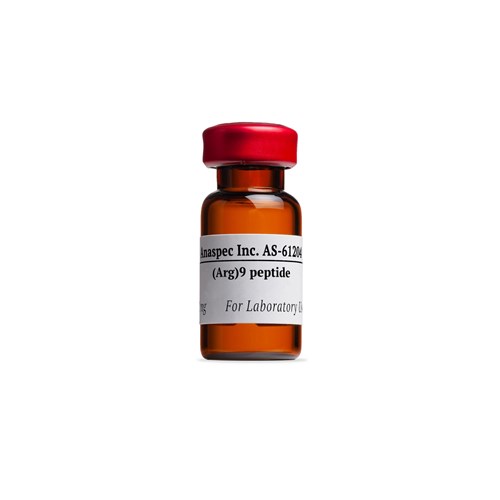Cell Permeable-Mastoparan Peptide
- Cat.Number : AS-24270
- Manufacturer Ref. :
-
Availability :
In stock
This 14-residue peptide toxin from the wasp venom is originally found as a histamine releaser from mast cells. It induces mitochondrial membrane permeabilization via a CsA-inhibitable mechanism.
Specifications
| Chemistry | |
| Sequence one letter code |
|
|---|---|
| Sequence three letter code |
|
| CAS registry number |
|
| Molecular Formula |
|
| Molecular Mass/ Weight |
|
| Modification | |
| Conjugation |
|
| Quantity & Purity | |
| Purity |
|
| Storage & stability | |
| Form |
|
| Storage Conditions |
|
| Activity | |
| Biomarker Target | |
| Research Area | |
| Sub-category Research Area | |
| Usage |
|
| Source | |
| Source / Species |
|
Downloads
You may also be interested in the following product(s)



References
Interaction of mastoparan with membranes studied by 1H-NMR spectroscopy in detergent micelles and by solid-state 2H-NMR and 15N-NMR spectroscopy in oriented lipid bilayers.
Eur J Biochem . 2003 Sep 15 ; 268 302 | DOI : https://doi.org/10.1046/j.1432-1033.2001.01880.x
- Y. Hori
- et al
Identification of a 97-kDa mastoparan-binding protein involving in Ca(2+) release from skeletal muscle sarcoplasmic reticulum.
Mol Pharmacol. . 2000 Jun 01 ; 57(6) 1235 | DOI : PMID: 10825395
- Y. Hirata
- et al
Mastoparan-stimulated prolactin secretion in rat pituitary GH3 cells involves activation of Gq/11 proteins.
Endocrinology. . 1997 May 01 ; 138(5) 1949 | DOI : 10.1210/endo.138.5.5111
- Y. Yajima
- et al
A Gs-selective analog of the receptor-mimetic peptide mastoparan binds to Gs alpha in a kinked helical conformation.
Biochemistry. . 1997 Mar 25 ; 36(12) 3632 | DOI : 10.1021/bi962356m
- M. Sukumar
- et al

